Subscribe now and get the latest podcast releases delivered straight to your inbox.
5 Cornerstones of Successful Inbound Marketing for Marketing Agencies

Apr 24, 2023

I have spent the better part of a decade (and my career for that matter), marketing for a marketing agency. How’s that for meta?
As a marketer, I can’t say this is what I originally saw myself doing and, in theory, it seems like it would be relatively easy — marketing marketing.
But the truth is, inbound marketing for an inbound marketing agency presents its own unique set of challenges and hurdles to jump.
Many of the questions are the same as with any business.
How can I best reach my audience? How can I get them to convert?
But on top of this is the not-so-sweet cherry of knowing your audience may already be hip to your strategies.
All that being said, inbound marketing for an agency can be done and, more importantly, it can be done creatively and effectively.
For over a decade, we have done this for ourselves successfully and helped agencies all over the world do so as well. In this article, I’ll help you understand how.
Inbound marketing (at a high level)
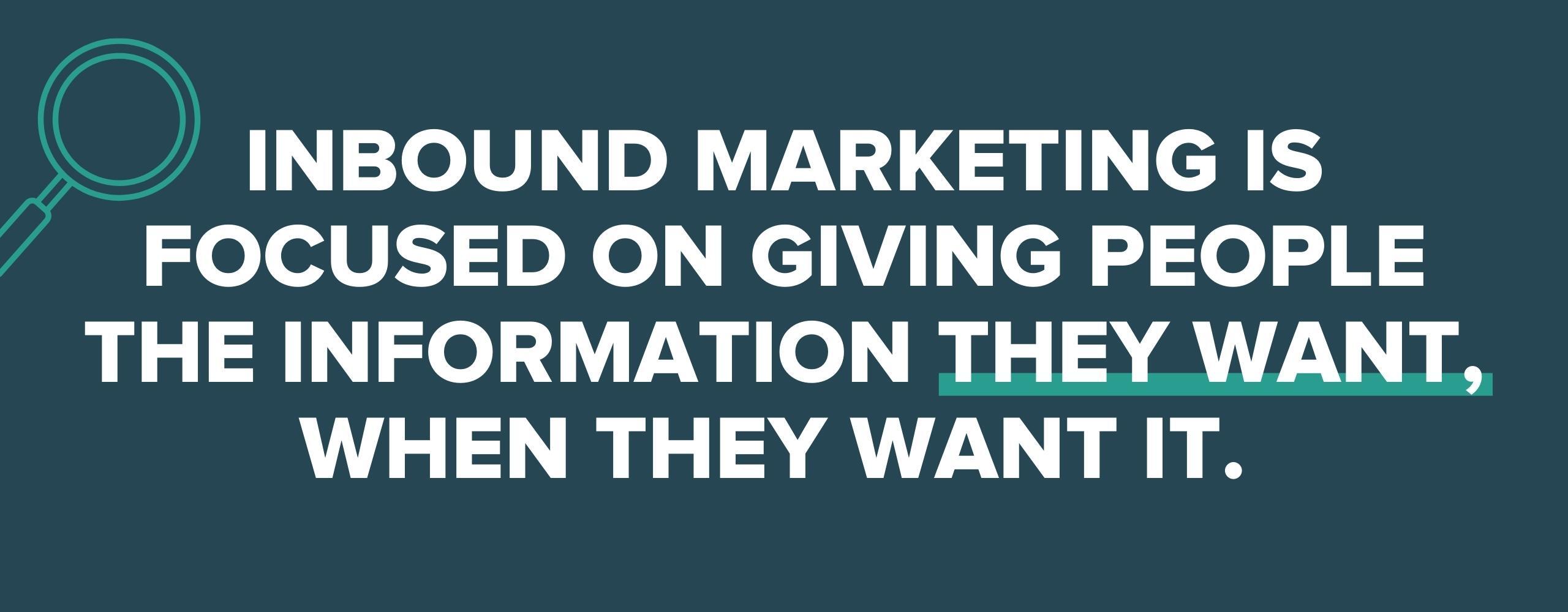
When customers are thinking about making a purchase, they usually start by gathering information — and they don’t want to have to talk to a salesperson to do this.
Enter inbound marketing.
Simply put, inbound marketing is an approach to digital marketing focused on giving people the information they want, when they want it.
Marketing used to be disruptive. It was billboards on the side of the highway or print ads in between the content in magazines people actually were looking for.
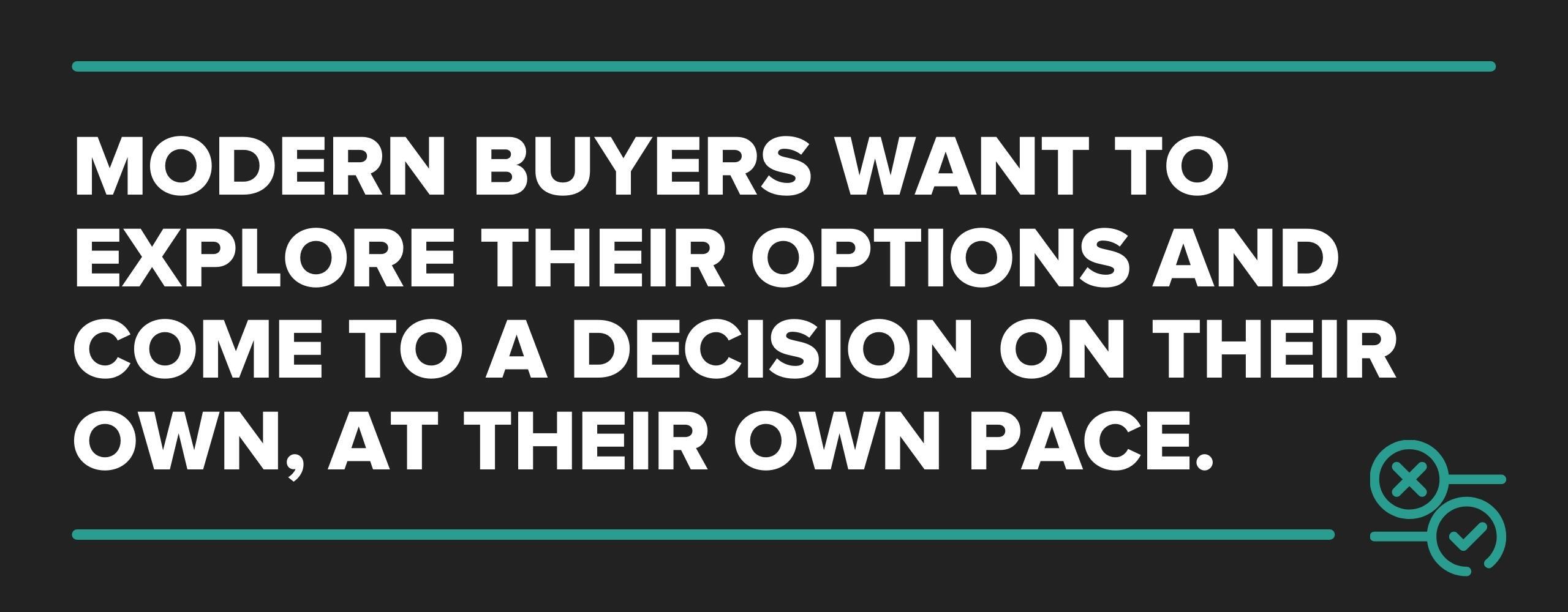
Modern buyers aren’t as responsive to these traditional or outbound marketing methods anymore. Today, they want to learn. They want to explore their options and come to a decision on their own, at their own pace.
Knowing this, it should come as no surprise to learn that 59% of shoppers say they use Google to start researching a purchase they plan to make in-store or online at a later time. In fact, the majority of B2B consumers report consulting at least three pieces of online content before making a purchase.
If your business takes the time to create quality content that provides the answers and information your target market is looking for, that target market will begin to trust you as a helpful resource, and in turn, they'll be more likely want to buy from you.
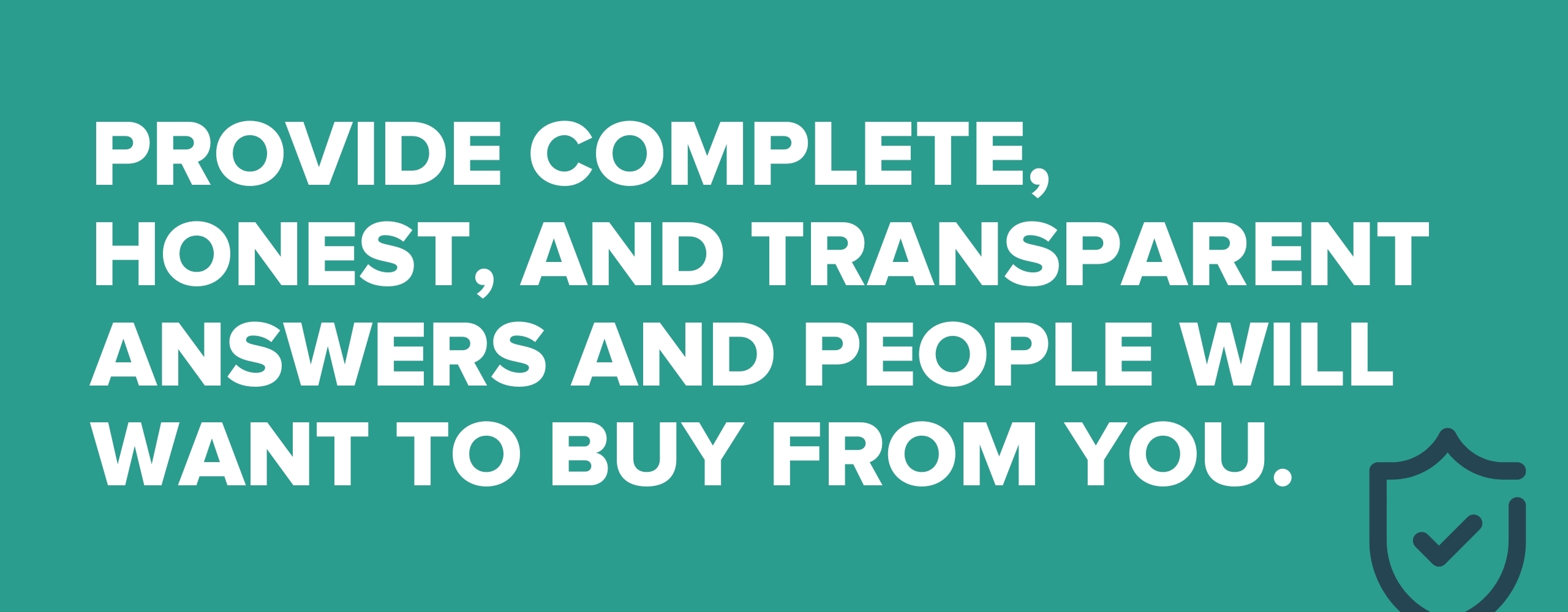
This is the essential belief behind most inbound marketing strategies.
IMPACT partner and author Marcus Sheridan has even built an entire framework around this premise in his book They Ask, You Answer, but what does this look like for an inbound agency?
The cornerstones of an inbound marketing strategy
If you’re a marketing agency, your target audience is likely looking for answers on how to generate leads and best market their business.
They’re also likely subconsciously (or even consciously) evaluating how you market your own agency as an example of what you can do for them.
So, you have to put your best foot forward.
Ideally, here’s how inbound marketing works for an inbound marketing agency, or for any business really.
Through search engine optimization (or perhaps social media marketing), potential customers find your brand and website and consume your content.
From there, they explore your content and brand and "raise their hand" to be contacted by you — perhaps by following you, subscribing to a newsletter, filling form or landing page to get an offer, or maybe even shooting you a private message on social media.
From here, you can nurture them closer toward wanting to speak to sales or make a purchase through content. This could even include email or even paid ads.
Great inbound marketing relies on several different mediums and tactics to be successful, but it all begins and is fueled by one thing — content.
Great content marketing answers universal buyer questions
When it comes to inbound marketing, at IMPACT we’ve found it’s most effective to start by creating content that answers the most pressing questions your buyer has in their purchase journey.
Regardless of your product or industry, these questions tend to be the same. For example, customers usually wants to know about the cost of all of their options. They want to know how much they are going to spend and that they are making the right decision for themselves.
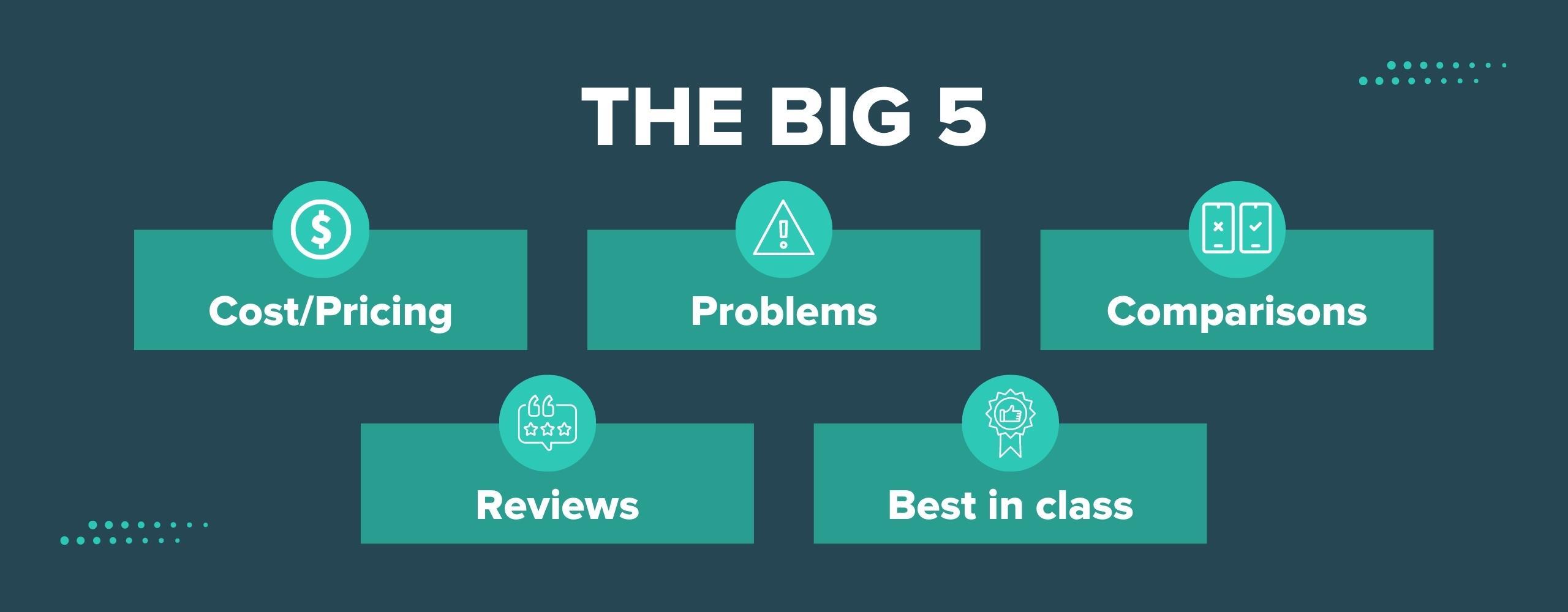
They Ask, You Answer groups the most common content topics into a framework called The Big 5:
- Cost/Pricing: How much your solution costs (factors, considerations, what defines value, etc.).
- Problems: The negatives about, or issues with your solution (that buyers tend to ask about).
- Comparisons: How your service or solution compares to other options.
- Reviews: Honest and unbiased opinions and observations about you and your offering
- Best of (or best in class): What the best solutions available are for the problem you solve.
Because all buyers want answers to these same questions, these five categories can serve as the first structure of your inbound marketing strategy.
But remember it’s not just about writing articles
The content you use to attract buyers can take many forms — articles, videos, infographics, podcasts, social media posts, and webinars, among many others.
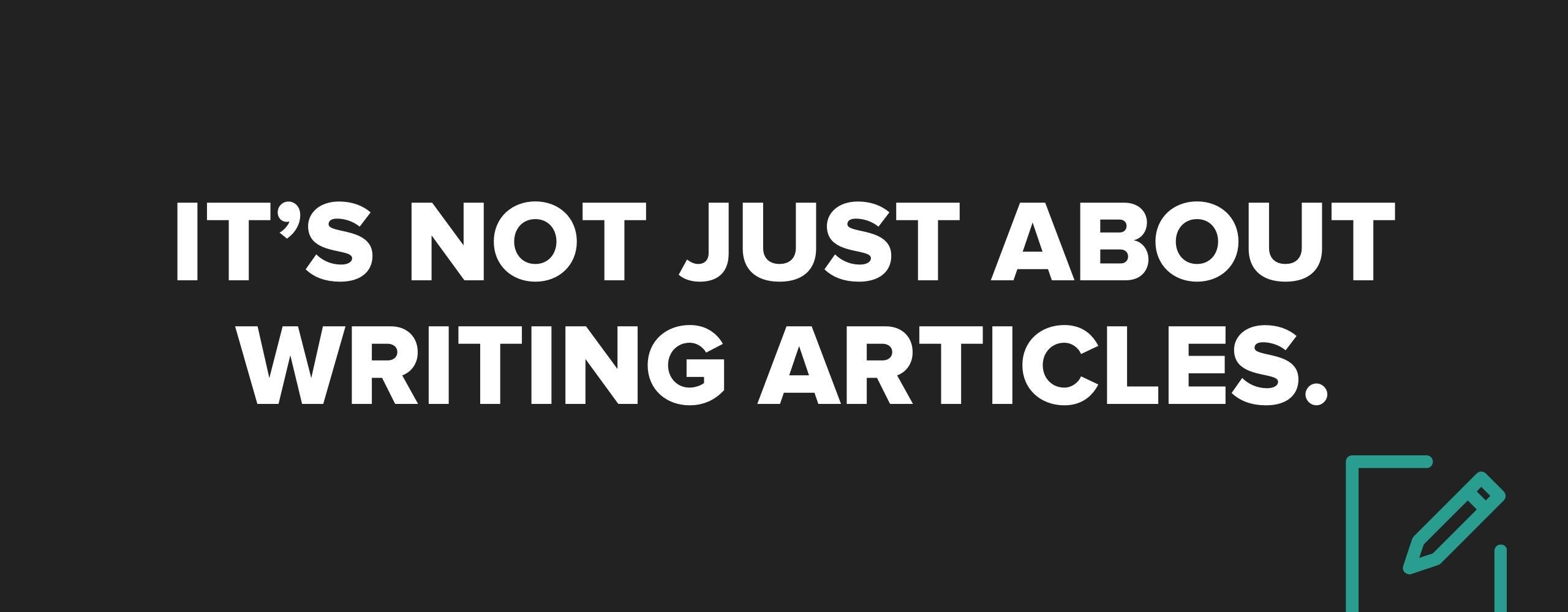
Today, buyers want their content to be as easy and convenient to consume as possible. For some, this might be a video. For others, it’s text.
An effective inbound marketing content strategy makes use of multiple digital marketing mediums, and what this mix looks like will depend on your needs, staff, industry, and of course, your buyers’ unique preferences.
Examples of inbound in action for an inbound marketing agency
Now that you know what inbound marketing entails for an inbound marketing agency, let’s take a look at some examples.
Since inbound marketing for an agency can take many forms, we'll use The Big 5 to narrow our focus.
Cost: How much your solution costs (factors, considerations, what defines value, etc.)
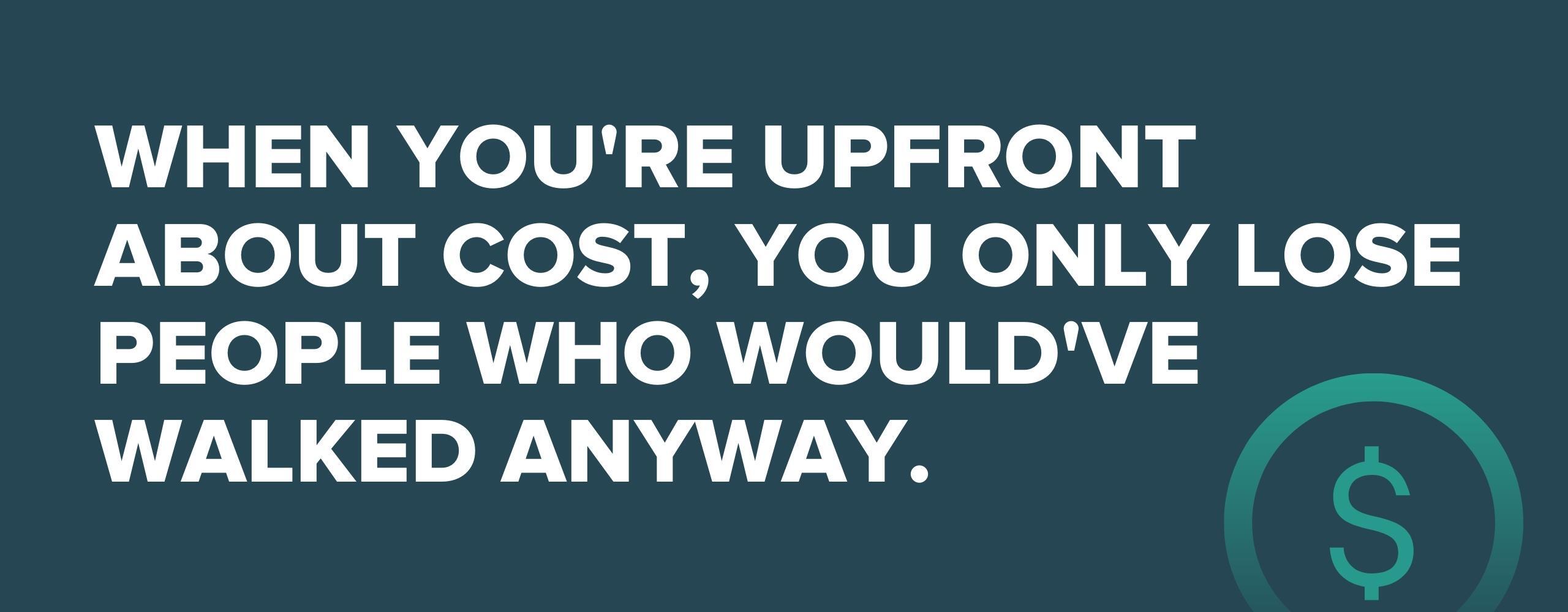
Cost is a touchy subject for many businesses. They worry that if they list their price, they may scare people off.
But the reality is, when you avoid talking about price, you end up scaring off more people. They assume they can't afford you or leave because they don't want to jump through hoops just to get a quote.
When you're upfront about cost, you only lose people who would've walked anyway.
Creating content around price or cost shows your audience that you are an open and honest business. You’re not trying to hide any information or trick someone into a phone call for an ambush sales pitch.
Yes, you may have fewer conversations, but the people you do speak to will be better informed about what they’re getting into and more likely to actually be ready and able to afford your product or services.
Inbound marketing agency Lean Labs does a great job of addressing cost/price creatively on their website with a pricing calculator.
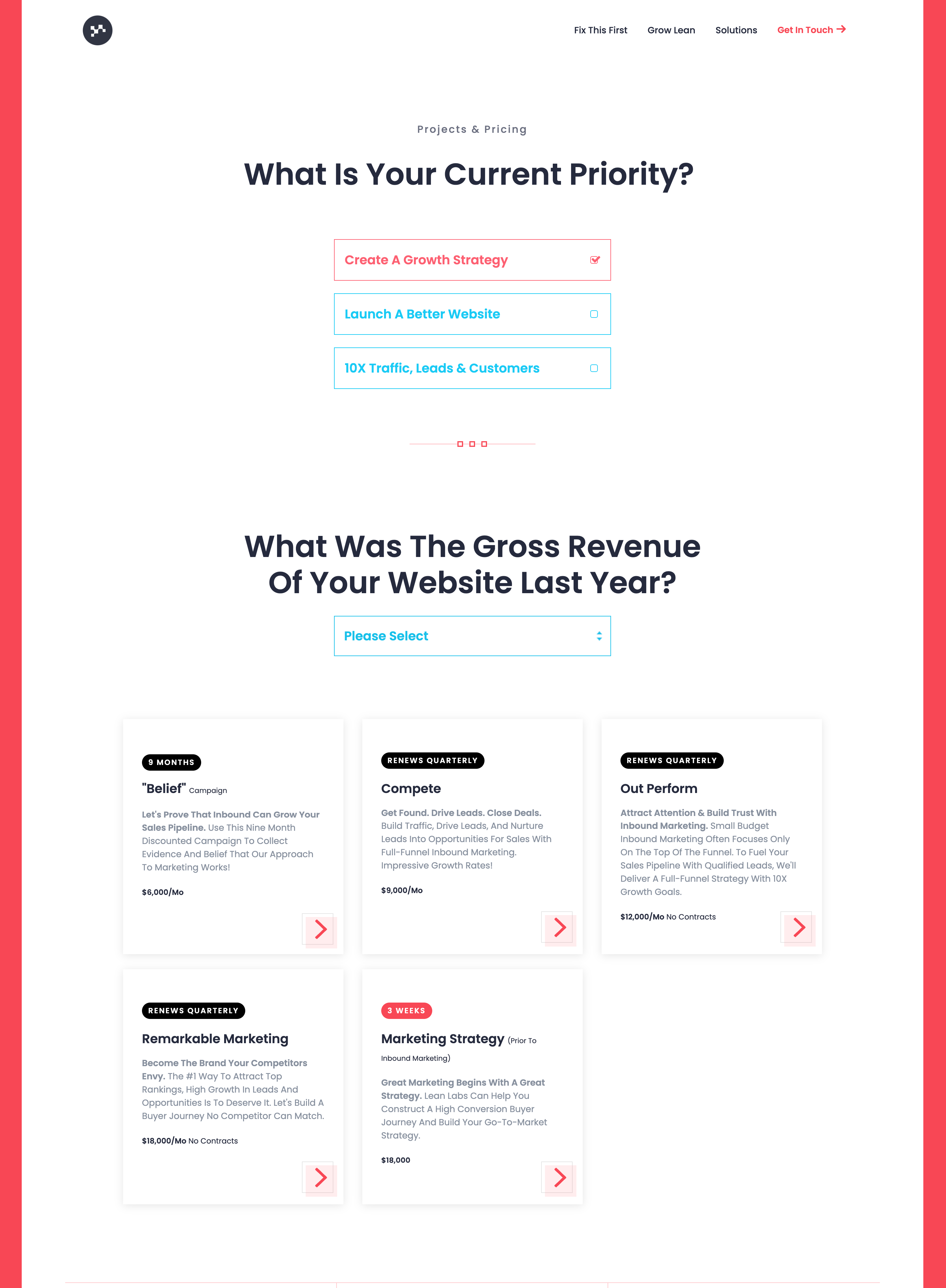
With two simple questions — What is your current priority? What was your gross revenue last year? — the agency is able to point the visitor to three packages with an approximate timeline, price tag, and brief description to help them gauge if this is a realistic option for them.
Problems: The negatives about, or issues with, your solution
Like cost, many inbound marketing agencies fear that discussing the problems or shortcomings of their offerings will also scare people off, and it makes sense. After all, why should you tell people the reasons not to buy from you?
But once again, this conversation comes back to trust and helping people make the best decisions for themselves.
Discussing the problems with your product or service ahead of entering a sales conversation avoids poor-fit customers signing on, as well as setting unrealistic expectations that can lead to poor reviews or experiences down the line.
In this example, our partner Red Pandas shares common problems with one of their key offerings, inbound marketing.
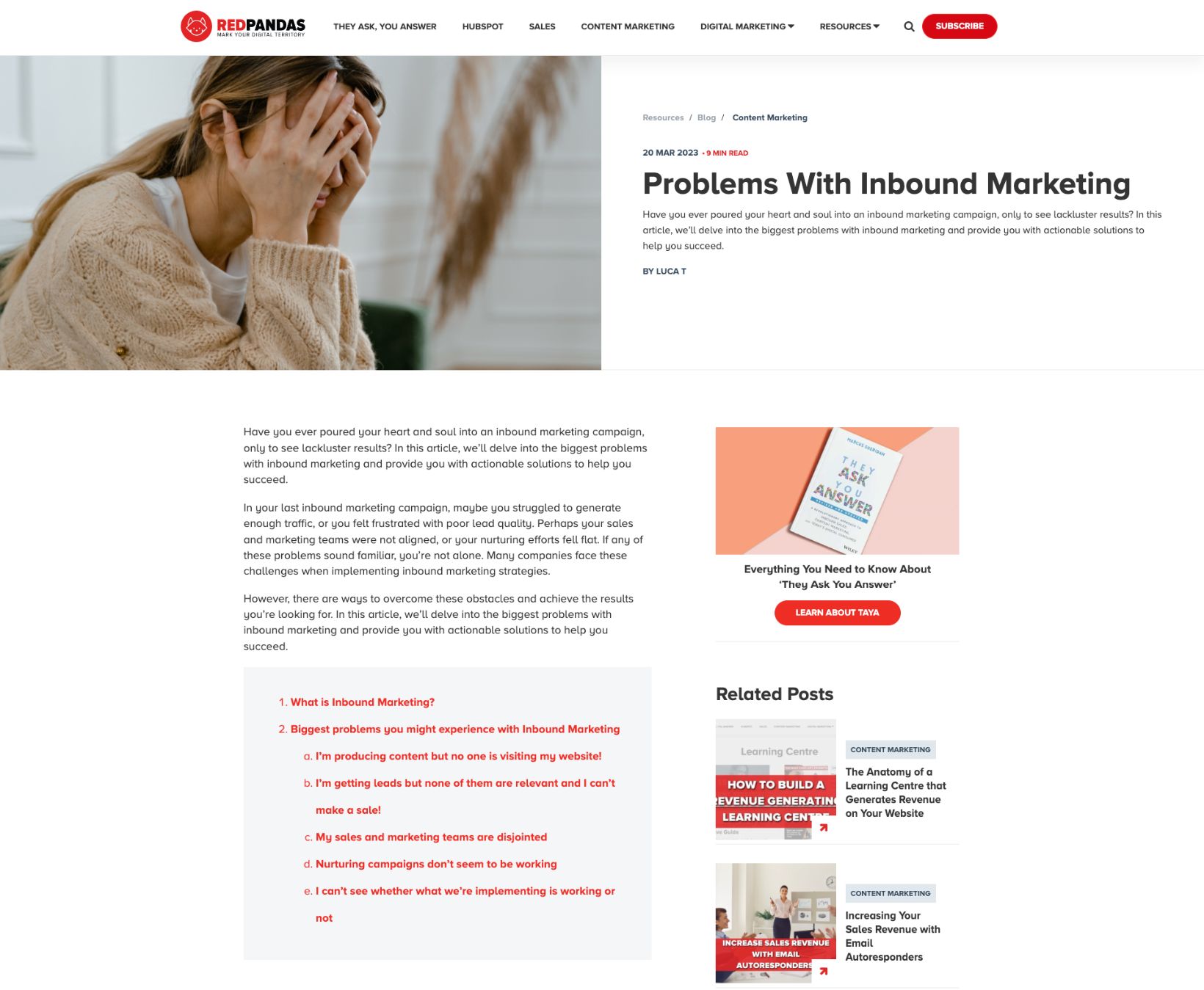
This is a skillful way to discuss “negatives” because while they are honest about the problems, they also share solutions.
Comparisons: How your product or solution compares to other options
As buyers are evaluating their options, they often like to directly compare their top choices to see how they stack up against each other.
That’s where comparison content comes in handy.
Impulse Creative does a great job with its inbound marketing efforts here, publishing a piece comparing working with an in-house marketing team and a marketing agency like them.
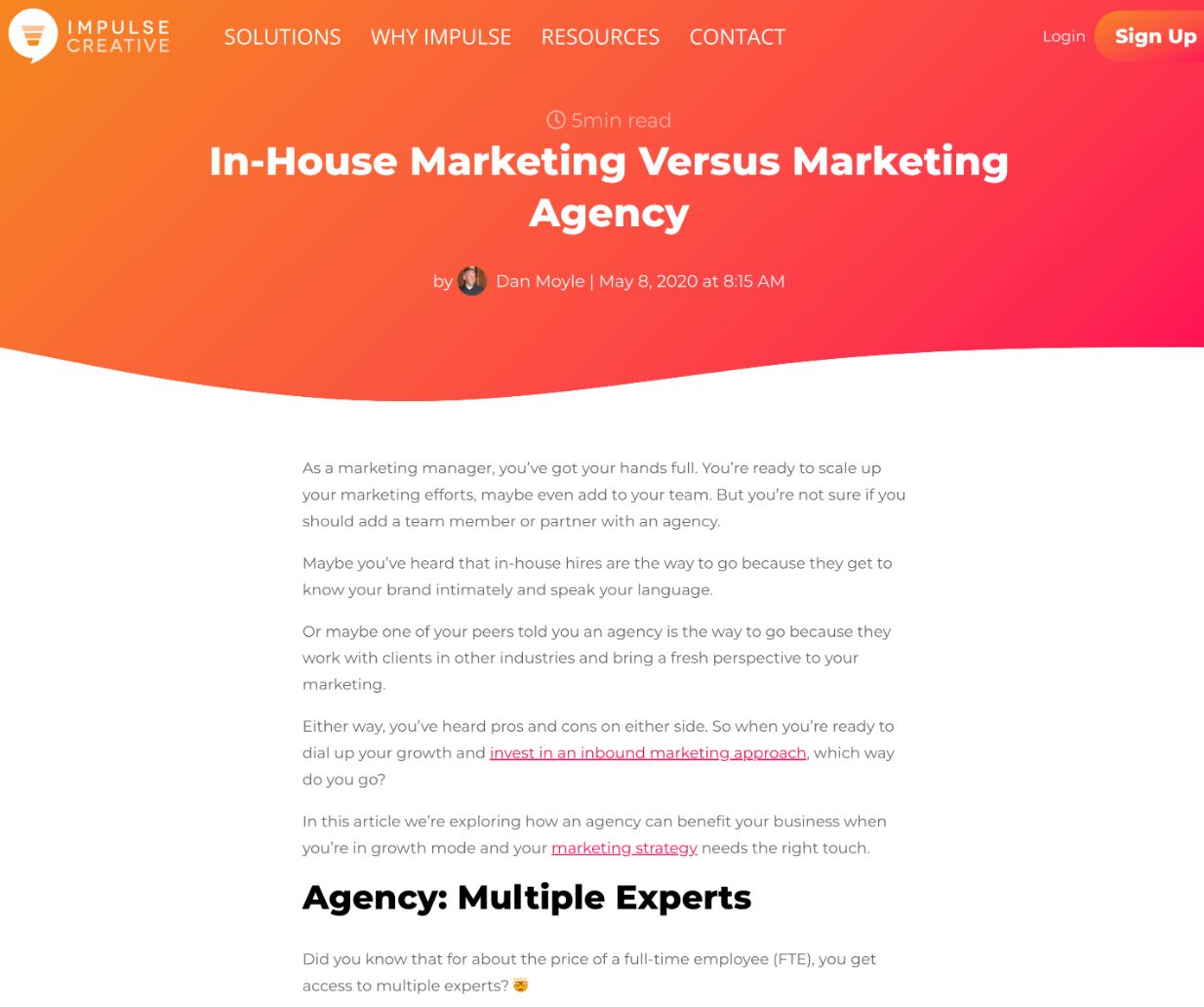
The agency zeroes in specifically on the team makeup and resources at your disposal with each option, but comparison articles can also go deeper into things like cost or specific features.
Another approach to a comparison article you can take is to directly compare products you sell versus their alternatives.
In this example from Salted Stone, we see the agency compare website hosting on HubSpot to WordPress.
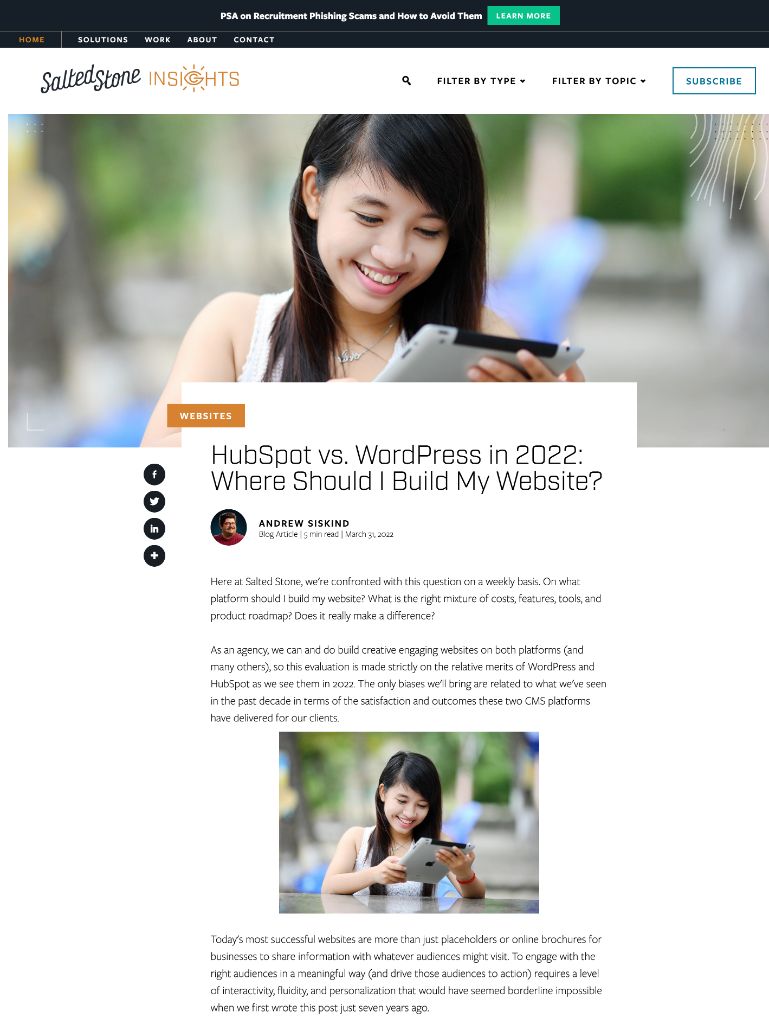
You can check out more great examples of comparison content here.
Reviews: Honest and unbiased opinions and observations about your product, solution, etc.
According to TrustPilot, around 89% of consumers say they make the effort to read reviews before buying products online.
Rather than letting them find that information from a competitor or third-party website, write candid, thorough reviews on your website to rank and get found in search engines when prospects are looking for them.
Like comparisons, these can be about you, your competitors, the products you sell, or the alternatives to the products you sell.
Here at IMPACT, we published a detailed review of the HubSpot CRM.
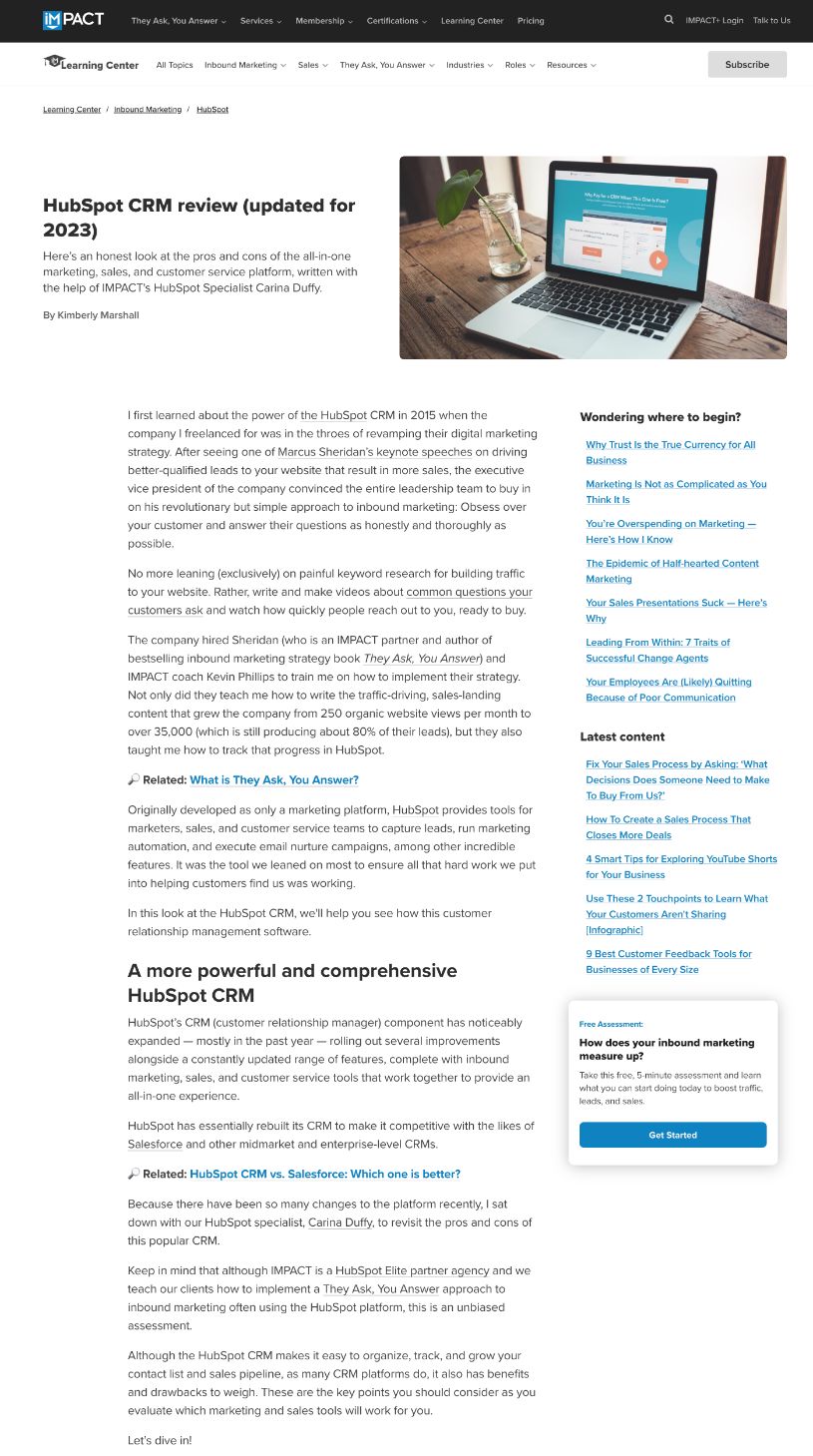
As a HubSpot Diamond Solutions partner, the HubSpot CRM is one of the tools we promote and encourage marketers to use. However, in this article, we put that bias aside to give people an honest reflection on the benefits and shortcomings of the tool.
Best of (or Best-in-class): What the best solutions available are
What are my best options?
This is a common question that crosses someone’s mind when making an important purchase, and by creating content about the “bests” in your industry, you can grab their attention and trust with a helpful answer.
There are a few approaches to “best of” articles you can take.
The first is a simple “top 10” list-style piece. Once again, Lean Labs does a great job with its content, this time discussing what it considers the top seven inbound marketing agencies (aside from themselves).
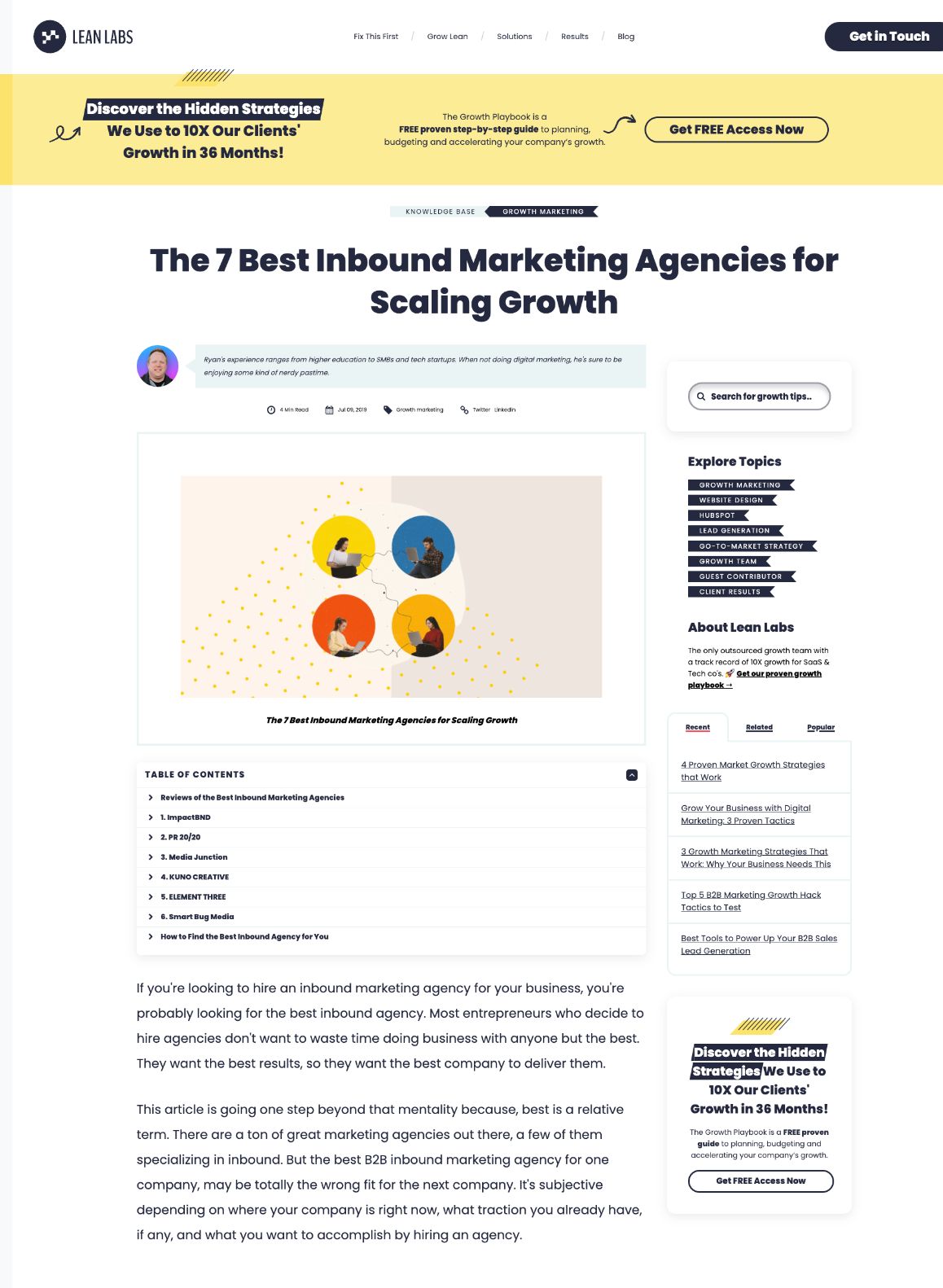
This builds trust by showing that the agency recognizes that they may not be the best match for everyone and by actually providing alternatives should a reader find themselves in the position of needing to hire an inbound marketing agency.
You can also create “best” content that shares examples for inspiration or education.
Our friends at BluLeadz take that approach here, creating an article sharing great mission statement examples:
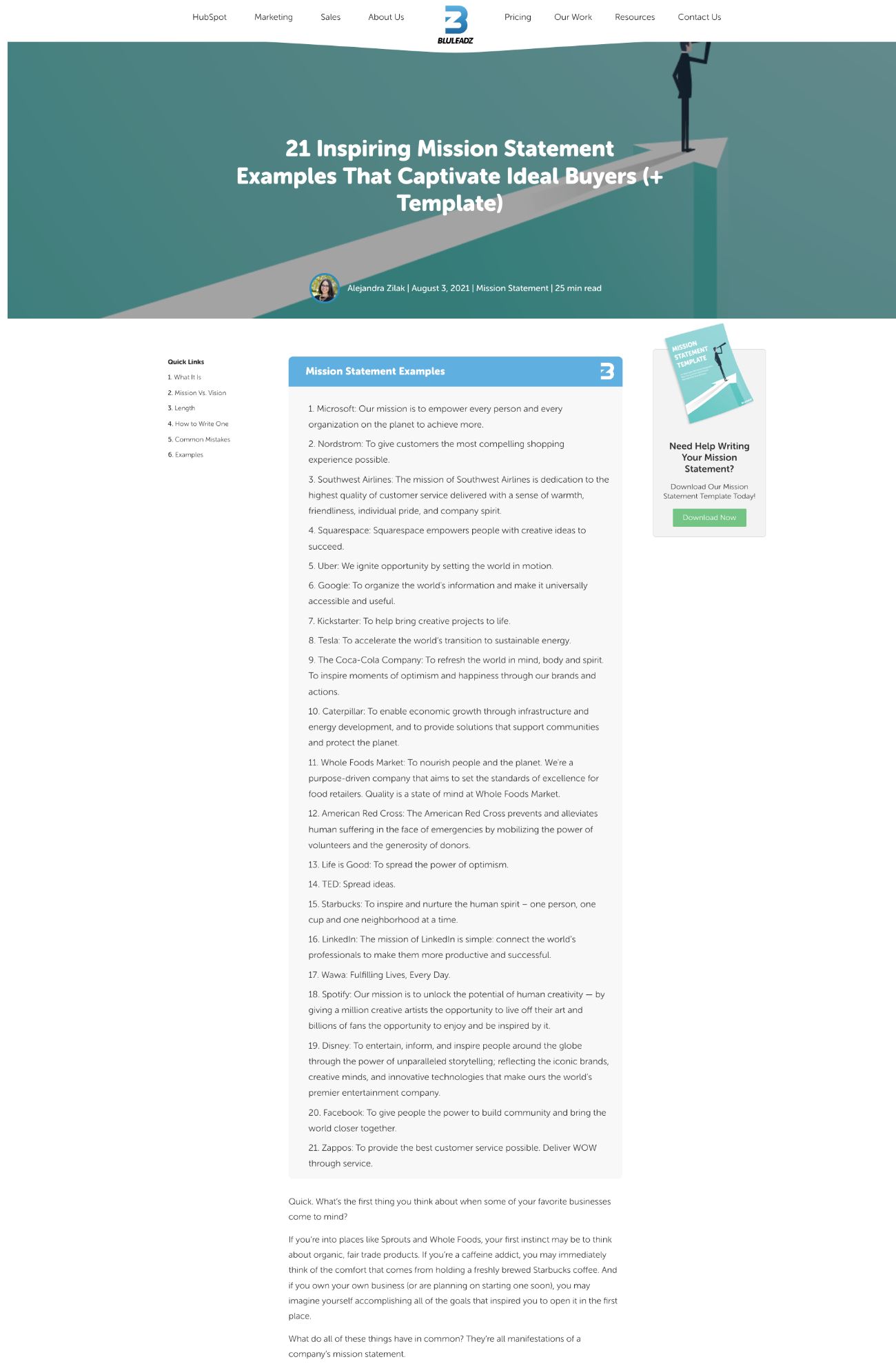
Be your own best case study
One of the biggest signs of integrity is practicing what you preach, and no one should understand that more than an inbound marketing agency.
The inbound marketing methodology is a powerful tool for driving traffic, generating leads, and filling your sales pipeline, but when your service is based on accomplishing this for others, you need to make sure you’ve mastered it for yourself first.
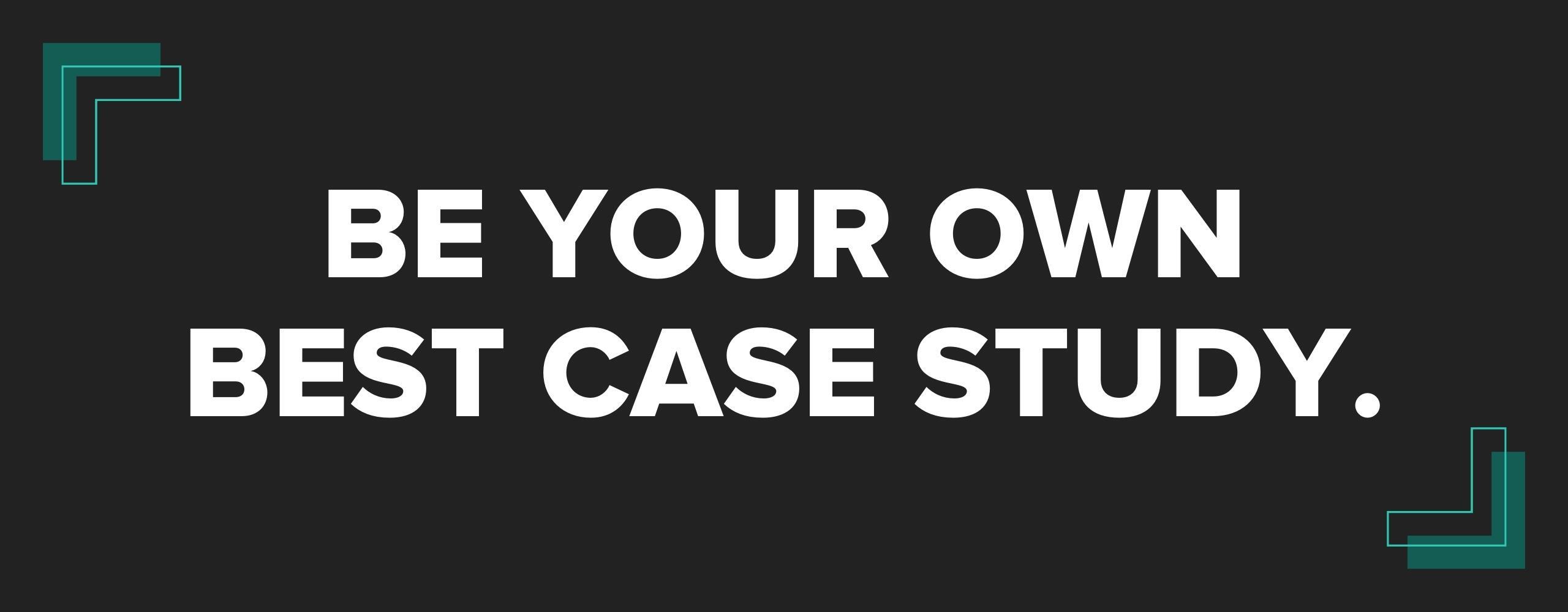
This is true whether you’re actively executing an inbound strategy for your clients or teaching them to do this on their own as a coach.
As a digital sales and marketing training company, we at IMPACT pride ourselves on helping business grow sales and their results overall by bringing their marketing operations in-house.
We also help agencies become more profitable, improve client results, and improve employee turnover by adopting a coaching model as well.
Interested in learning more about how to become one of them? Talk to one of our advisors about our Certified Partner Program.


Order Your Copy of Marcus Sheridan's New Book — Endless Customers!